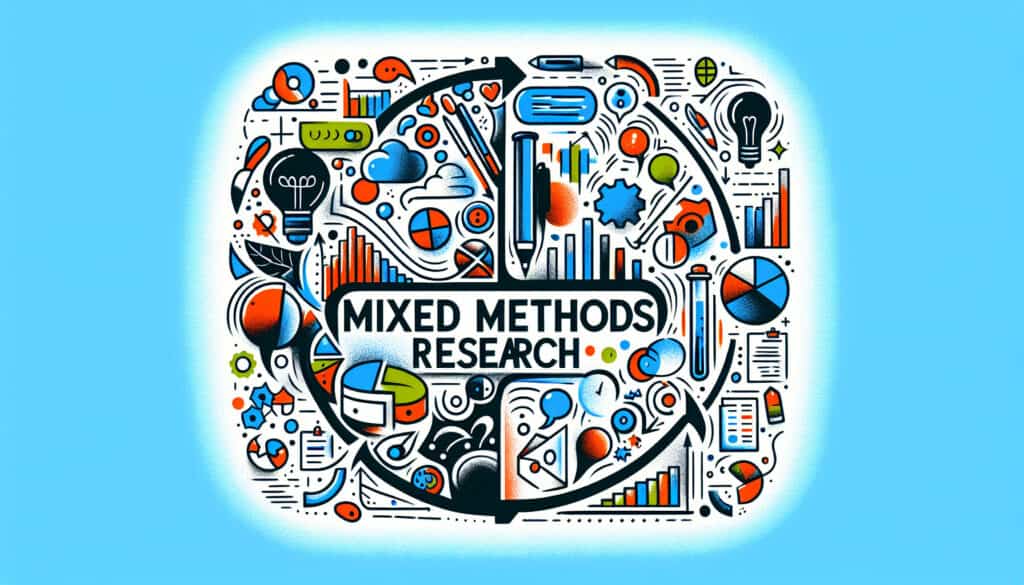Combiner des méthodes de recherche qualitatives et quantitatives dans une seule étude.
- Méthodologies : Clients et marketing, Idéation, Conception de Produits
Recherche sur les méthodes mixtes

Recherche sur les méthodes mixtes
- Analyse de la variance (ANOVA), Méthodologie, Recherche et développement, Statistical Analysis, Expérience utilisateur (UX), User-Centered Design
Objectif :
Comment il est utilisé :
- Approche de recherche dans laquelle le chercheur recueille et analyse des données à la fois qualitatives et quantitatives. L'objectif est d'obtenir une compréhension plus complète d'un problème de recherche que l'une ou l'autre méthode ne pourrait fournir à elle seule.
Avantages
- Permet une compréhension plus complète d'un problème de recherche ; Peut augmenter la validité et la fiabilité des résultats.
Inconvénients
- Elle peut être complexe et longue à mener ; elle nécessite une expertise dans les méthodes qualitatives et quantitatives.
Catégories :
- Résolution de problèmes, Conception de Produits
Idéal pour :
- Acquérir une compréhension approfondie d'un problème de recherche complexe, tel que l'expérience utilisateur d'un nouveau produit.
La recherche par méthodes mixtes consiste à intégrer des données qualitatives et quantitatives pour examiner les problèmes de recherche sous plusieurs angles, ce qui la rend très efficace dans divers secteurs, notamment les soins de santé, l'éducation et la conception de produits. Par exemple, dans la conception de produits, cette méthodologie peut être employée pendant la phase de recherche sur l'expérience utilisateur, où les concepteurs peuvent recueillir des statistiques quantitatives sur l'utilisation à partir d'enquêtes ainsi que des informations qualitatives provenant de groupes de discussion ou d'entretiens avec les utilisateurs afin de comprendre comment les utilisateurs interagissent avec un prototype. Cette méthode est particulièrement utile dans les processus de conception itératifs, car elle permet aux équipes de procéder à des changements en connaissance de cause, sur la base d'une synthèse des tendances numériques et des expériences personnelles. Les parties prenantes telles que les concepteurs, les ingénieurs, les chercheurs en expérience utilisateur et les équipes de marketing collaborent souvent dans le cadre de cette approche, car chacun peut apporter des perspectives distinctes, comblant ainsi le fossé entre les besoins des utilisateurs et la fonctionnalité du produit. La triangulation de données provenant de diverses sources permet d'améliorer la validité et la fiabilité des résultats, ce qui améliore la prise de décision et l'innovation dans le développement de produits. Cette méthodologie peut conduire à plus de centré sur l'utilisateur des conceptions qui trouvent un écho auprès des utilisateurs finaux, en répondant à la fois à leurs exigences fonctionnelles et à leurs réactions émotionnelles à l'égard d'un produit.
Principales étapes de cette méthodologie
- Définir la question de recherche qui intègre à la fois des aspects qualitatifs et quantitatifs.
- Choisir des méthodes qualitatives et quantitatives appropriées qui se complètent.
- Déterminer la stratégie d'échantillonnage pour la collecte de données qualitatives et quantitatives.
- Mettre en œuvre des techniques d'analyse de données qualitatives et quantitatives simultanément ou successivement.
- Intégrer les résultats qualitatifs et quantitatifs pour parvenir à une compréhension globale.
- Évaluer la cohérence et les contradictions entre les résultats qualitatifs et quantitatifs.
- Affiner les conclusions sur la base des informations combinées des deux ensembles de données.
Conseils de pro
- Concevoir des études à méthodes mixtes avec des définitions claires pour les phases qualitatives et quantitatives afin d'éviter les ambiguïtés dans l'intégration des données.
- Créer une stratégie cohérente de triangulation des données qui maximise les points forts de chaque méthode tout en remédiant à leurs faiblesses individuelles.
- Impliquer des équipes interdisciplinaires pour enrichir le processus d'analyse, en intégrant diverses expertises pour une meilleure compréhension du contexte.
Lire et comparer plusieurs méthodologies, nous recommandons le
> Référentiel méthodologique étendu <
ainsi que plus de 400 autres méthodologies.
Vos commentaires sur cette méthodologie ou des informations supplémentaires sont les bienvenus sur le site web de la Commission européenne. section des commentaires ci-dessous ↓ , ainsi que toute idée ou lien en rapport avec l'ingénierie.
Contexte historique
1986
(si la date est inconnue ou n'est pas pertinente, par exemple "mécanique des fluides", une estimation arrondie de son émergence notable est fournie)

Articles Similaires
Simulation de Monte Carlo
Tests basés sur des modèles
Contrôle des modèles
À l'épreuve des erreurs (Poka-Yoke)
Test du profil de la mission
Calculateur de METS en calories